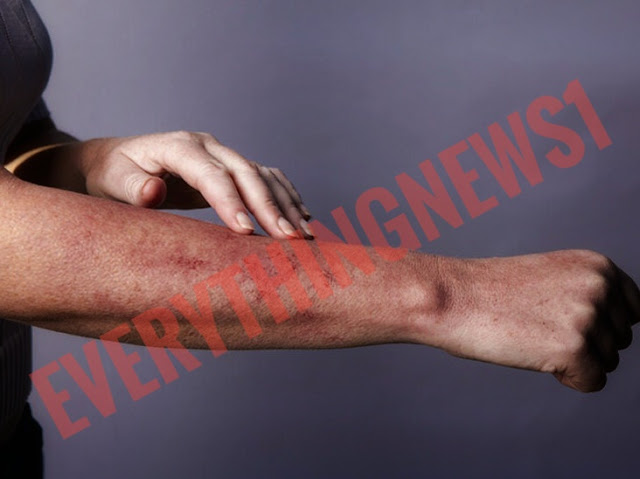Causes of the rash
A skin rash is a change in skin color or texture, which may be referred to by several other terms such as redness or inflammation of the skin, skin lesion, and erythema. Othe cause of the rash and appropriate treatment.
What is the rash??
A rash is defined as a widespread eruption of skin lesions; In fact, it is a very broad medical term. Its appearance can vary greatly from case to case, and there are many possible causes for its appearance. In general, the most common causes of skin rashes include contact dermatitis, physical infections, and allergic reactions to medications.
The rash can be localized, that is, on just one small part of the body, or it can cover a large area. It appears in many forms, affecting millions of people all over the world. With its different types, a wide variety of treatments are available. It should be noted that some types of skin rashes may not need treatment and go away on their own, while others can be treated at home. While other specific types may be a sign of something more serious.
What are the causes of rashes?
In fact, there are many skin and systemic conditions that can cause rashes to appear on the skin. Common causes include:
1. Contact dermatitis
One of the most common causes of skin rashes. The skin becomes red and inflamed as a negative reaction of the skin upon direct contact with a foreign substance such as: some cosmetic products, or chemicals found in materials such as latex or rubber, or contact with some poisonous plants, such as poison ivy and poison sumac.
2. Eczema (atopic dermatitis)
They tend to occur in people with allergies or asthma. Eczema can occur at any age, but it is more common in children. It is characterized by the appearance of a red, itchy and scaly rash.
3. Medication rash (caused by medication)
In fact, some people may develop a rash after they take a certain medication. The reason for this could be: side effects of the drug or an allergic reaction in some people to the drug. What's more, keep in mind that taking certain medications — such as some types of antibiotics — can cause photosensitivity, meaning the skin becomes more sensitive when exposed to sunlight. The effects of a photosensitivity reaction are similar to the effects of a sunburn on the skin.
4. Autoimmune diseases
Autoimmune diseases occur when the immune system attacks healthy tissues in the body. Many autoimmune diseases can cause skin rashes, led by lupus erythematosus. It is a condition that affects a number of body systems, including the skin. It results in a butterfly-shaped rash that often appears on the face.
5. Infections or infections
Infection with bacteria, viruses, or fungi can cause a rash. The appearance or distribution of the rash varies according to the type of infection. For example: candidiasis causes the appearance of an itchy rash, generally appearing in the folds (folds) of the skin. While the rash caused by shingles or shingles - which is caused by the chickenpox virus - is painful and sore and is located on one side of the body around the affected nerve.
6. A rash caused by insect bites
In fact, the bite of many insects can cause a rash. Although the reaction varies according to the causative insect and the response of each person's body, symptoms often include redness and a painful rash, local swelling at the site of the bite or more widespread. For example, the rash caused by flea bites (fleas – very small jumping insects that can live in the fabrics indoors), is in the form of red spots, and the skin can become irritated and painful. Secondary infection may also occur due to scratching caused by scratching the skin.
7. Hay Fever
Or allergic rhinitis, is an allergic reaction to pollen or pollen, occurring in the spring. Symptoms are similar to those of the common cold, including runny nose, watery eyes, and sneezing. Hay fever can also cause a hive-shaped rash that appears as itchy red spots or bumps on the skin.
8. Lyme disease
Lyme disease is a bacterial infection with Borrelia that is transmitted to humans through the bite of an infected tick. Its symptoms include an “erythematous migratory rash” that often appears in the early stages of the disease. The rash begins as a small red area that may be warm to the touch but is not itchy. The center of the rash then becomes pale, giving it a bull's-eye appearance. The rash does not necessarily appear at the site of the tick bite, but can appear anywhere on the body.
9. Herpes zoster
Shingles is a viral infection that affects a specific nerve and causes a painful rash. Although it can occur anywhere on the body, it most often appears as a band of blisters covering the left or right side of your torso. It is caused by the varicella-zoster virus, the same virus that causes chickenpox. Its symptoms include all of the following:
A rash similar to chickenpox in a band around the affected nerve.
- The blisters can merge to produce a solid red band.
- The rash is often excruciatingly painful.



Comments